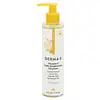What's inside
What's inside
 Key Ingredients
Key Ingredients

 Benefits
Benefits

 Concerns
Concerns

No concerns
 Ingredients Side-by-side
Ingredients Side-by-side

Aloe Barbadensis Extract
Skin ConditioningSodium Methyl Cocoyl Taurate
CleansingGlycerin
HumectantSodium Lauroyl Lactylate
EmulsifyingMicrocrystalline Cellulose
AbsorbentCellulose Gum
Emulsion StabilisingCharcoal Powder
AbrasiveFucus Vesiculosus Extract
EmollientUndaria Pinnatifida Extract
Skin ConditioningEpilobium Angustifolium Extract
Skin ConditioningCamellia Sinensis Leaf Extract
AntimicrobialXanthan Gum
EmulsifyingPhenoxyethanol
PreservativeEthylhexylglycerin
Skin ConditioningAloe Barbadensis Extract, Sodium Methyl Cocoyl Taurate, Glycerin, Sodium Lauroyl Lactylate, Microcrystalline Cellulose, Cellulose Gum, Charcoal Powder, Fucus Vesiculosus Extract, Undaria Pinnatifida Extract, Epilobium Angustifolium Extract, Camellia Sinensis Leaf Extract, Xanthan Gum, Phenoxyethanol, Ethylhexylglycerin
Water
Skin ConditioningSodium Methyl Cocoyl Taurate
CleansingCocamidopropyl Hydroxysultaine
CleansingGlyceryl Laurate
EmollientDisodium Laureth Sulfosuccinate
CleansingCocamidopropyl Betaine
CleansingNiacinamide
SmoothingPanthenol
Skin ConditioningGlycolic Acid
BufferingGlycyrrhiza Glabra Root Extract
BleachingAscorbyl Palmitate
AntioxidantArctostaphylos Uva Ursi Leaf Extract
Skin ConditioningLilium Candidum Leaf Cell Extract
Skin ConditioningCamellia Sinensis Leaf Extract
AntimicrobialRetinyl Palmitate
Skin ConditioningAllantoin
Skin ConditioningCitrus Aurantium Dulcis Oil
MaskingPotassium Sorbate
PreservativePhenoxyethanol
PreservativeEthylhexylglycerin
Skin ConditioningWater, Sodium Methyl Cocoyl Taurate, Cocamidopropyl Hydroxysultaine, Glyceryl Laurate, Disodium Laureth Sulfosuccinate, Cocamidopropyl Betaine, Niacinamide, Panthenol, Glycolic Acid, Glycyrrhiza Glabra Root Extract, Ascorbyl Palmitate, Arctostaphylos Uva Ursi Leaf Extract, Lilium Candidum Leaf Cell Extract, Camellia Sinensis Leaf Extract, Retinyl Palmitate, Allantoin, Citrus Aurantium Dulcis Oil, Potassium Sorbate, Phenoxyethanol, Ethylhexylglycerin
 Reviews
Reviews

Ingredients Explained
These ingredients are found in both products.
Ingredients higher up in an ingredient list are typically present in a larger amount.
Camellia Sinensis Leaf Extract is derived from the leaves of the tea plant. Black tea, green tea, and oolong tea are all harvested from this plant.
This ingredient has many skin benefits:
This ingredient contains polyphenols, a strong antioxidant. Antioxidants help fight off molecules that damage skin cells.
On top of that, the antioxidants in green tea neutralize free-radicals from the sun. This gives the skin some extra UV protection, but should not replace sunscreen.
Many components of tea have anti-inflammatory properties.
Polyphenols and L-theanine help soothe the skin and reduce irritation. The caffeine in Camellia Sinensis Leaf Extract helps calm inflamed blood vessels.
Other compounds found in tea include: Vitamin Bs, linoleic acid, magnesium, calcium, iron, and zinc.
Research has shown both drinking Camellia Sinensis Leaf Tea and applying it to the skin can help boost skin elasticity and hydration. Studies also show using tea extract may reduce sebum, or oil, production.
Learn more about Camellia Sinensis Leaf ExtractEthylhexylglycerin (we can't pronounce this either) is commonly used as a preservative and skin softener. It is derived from glyceryl.
You might see Ethylhexylglycerin often paired with other preservatives such as phenoxyethanol. Ethylhexylglycerin has been found to increase the effectiveness of these other preservatives.
Phenoxyethanol is a preservative that has germicide, antimicrobial, and aromatic properties. Studies show that phenoxyethanol can prevent microbial growth. By itself, it has a scent that is similar to that of a rose.
It's often used in formulations along with Caprylyl Glycol to preserve the shelf life of products.
This gentle cleansing and foaming ingredient is known for leaving a smooth feeling in skin and hair. It is made using coconut oil.
According to the manufacturer, it is soluble in water and has resistance to hard water, acid, and alkali.
Due to its coconut base, it may not be Malassezia folliculitis safe.
Learn more about Sodium Methyl Cocoyl Taurate